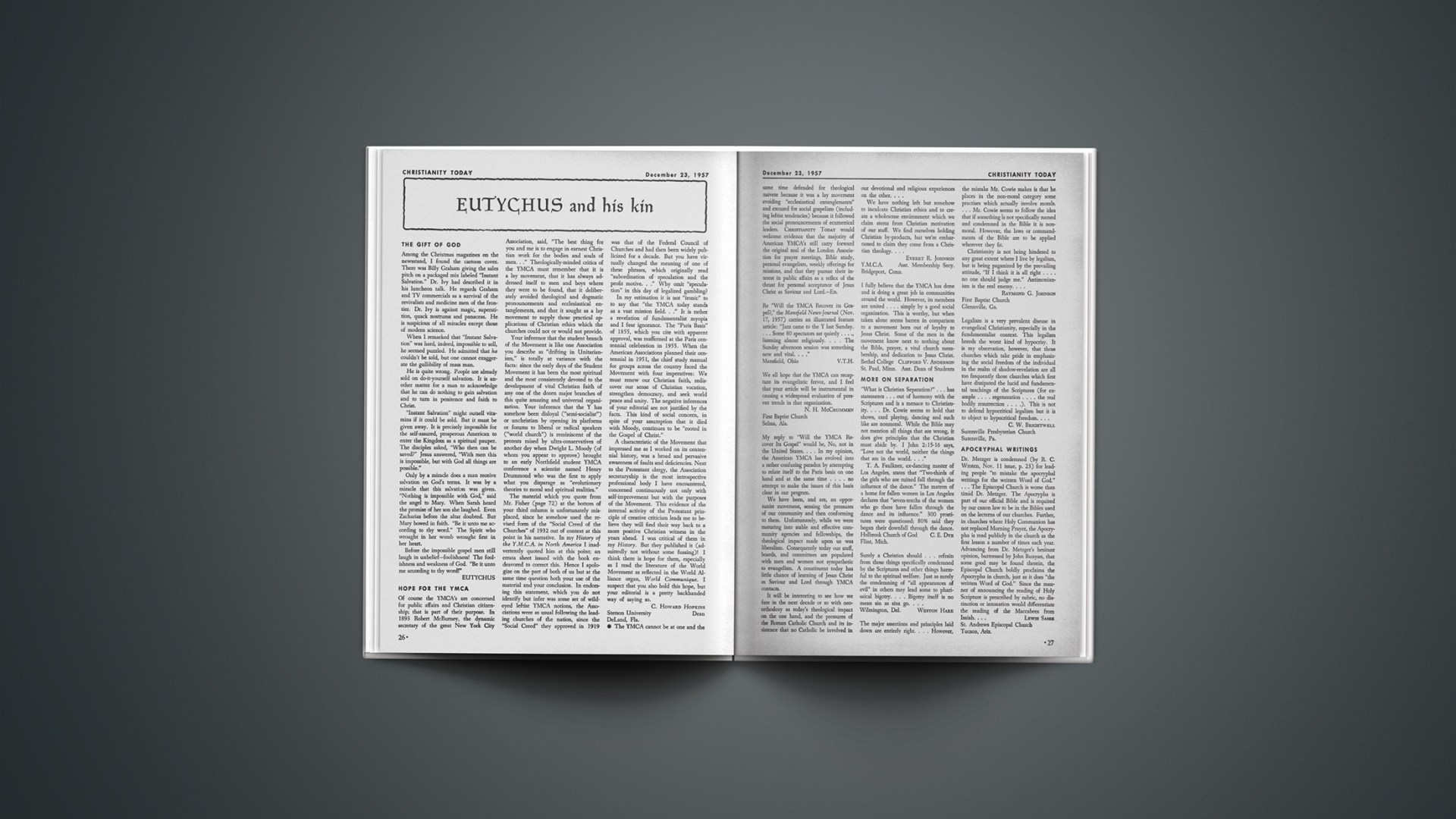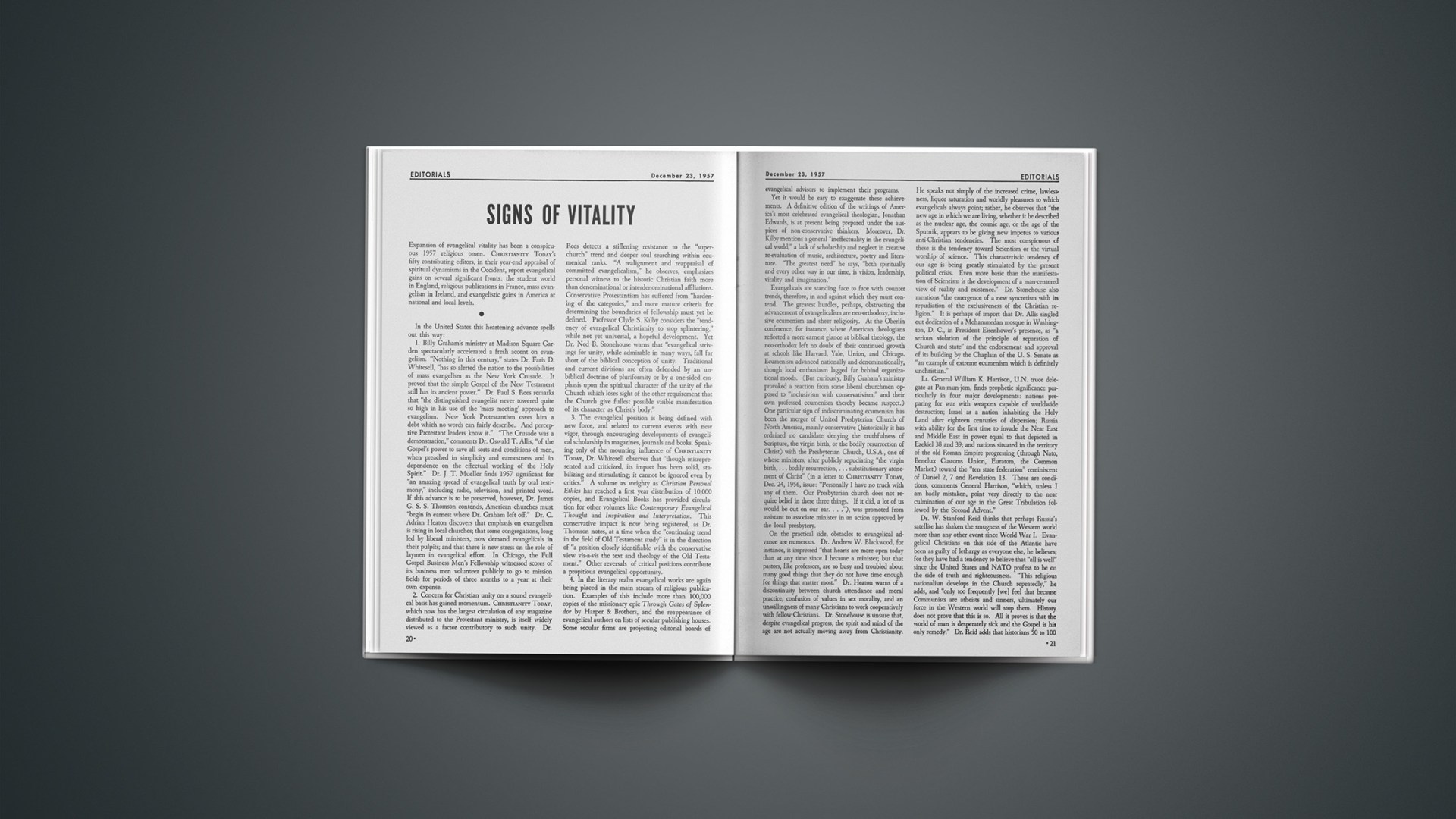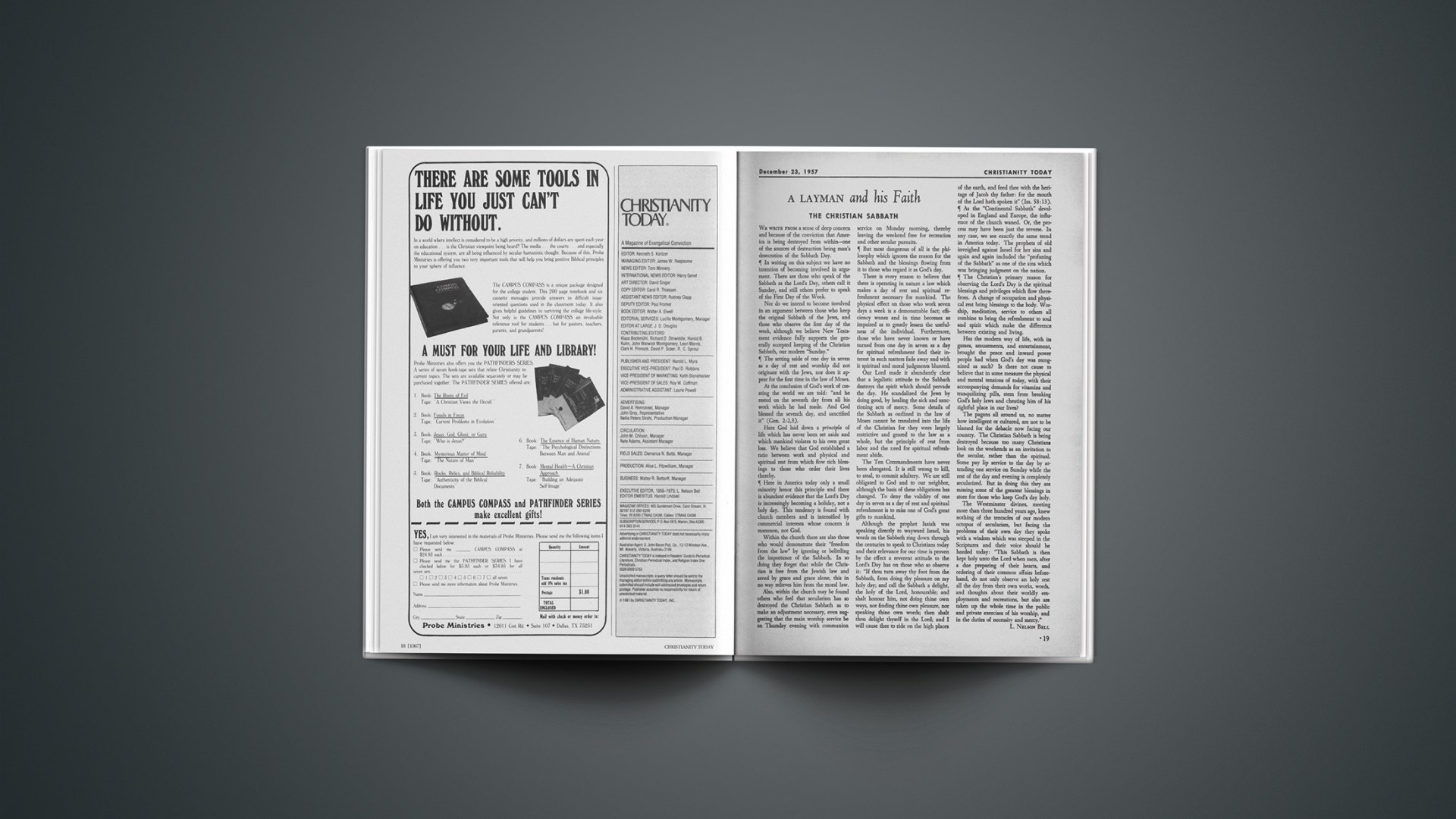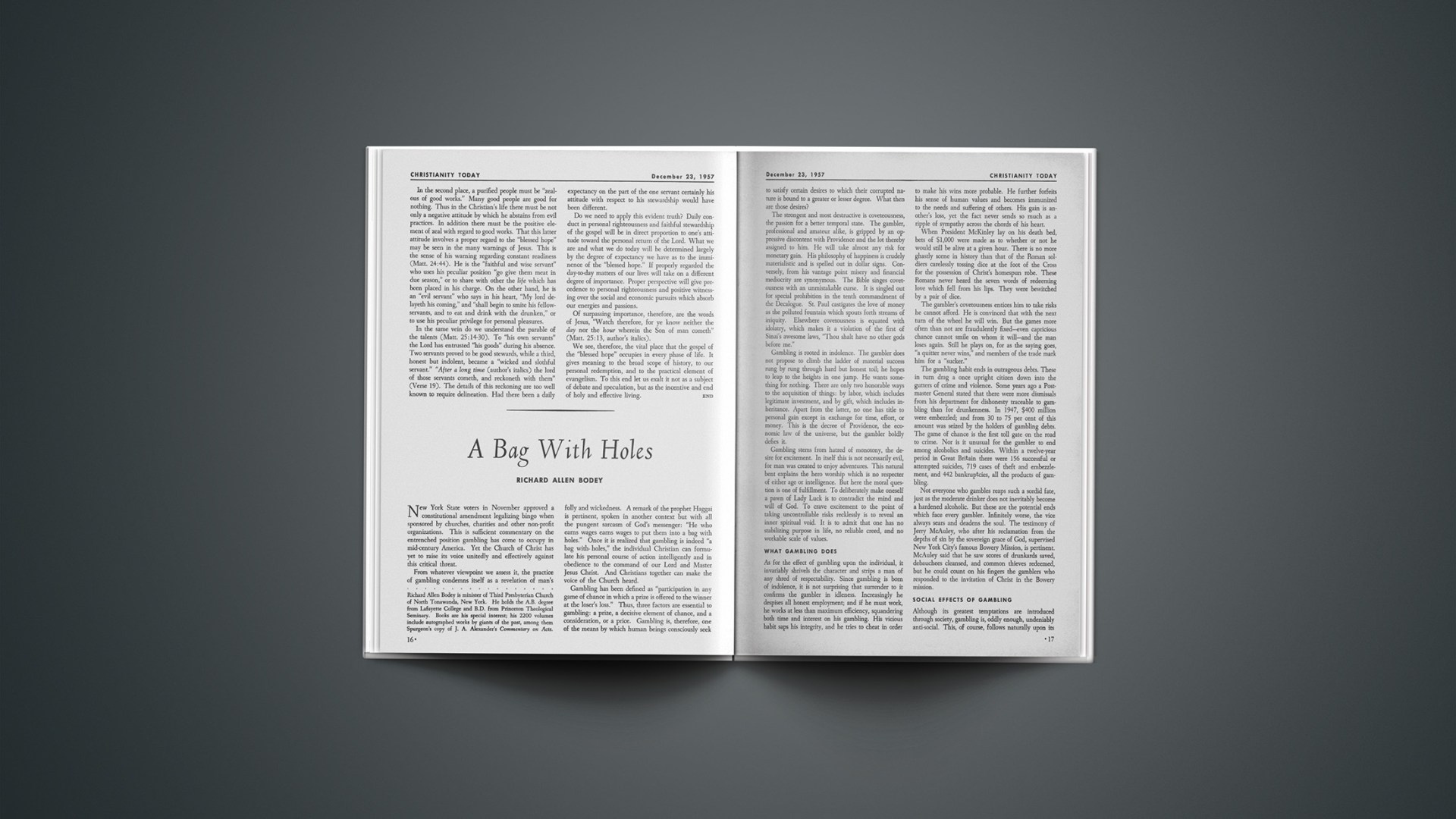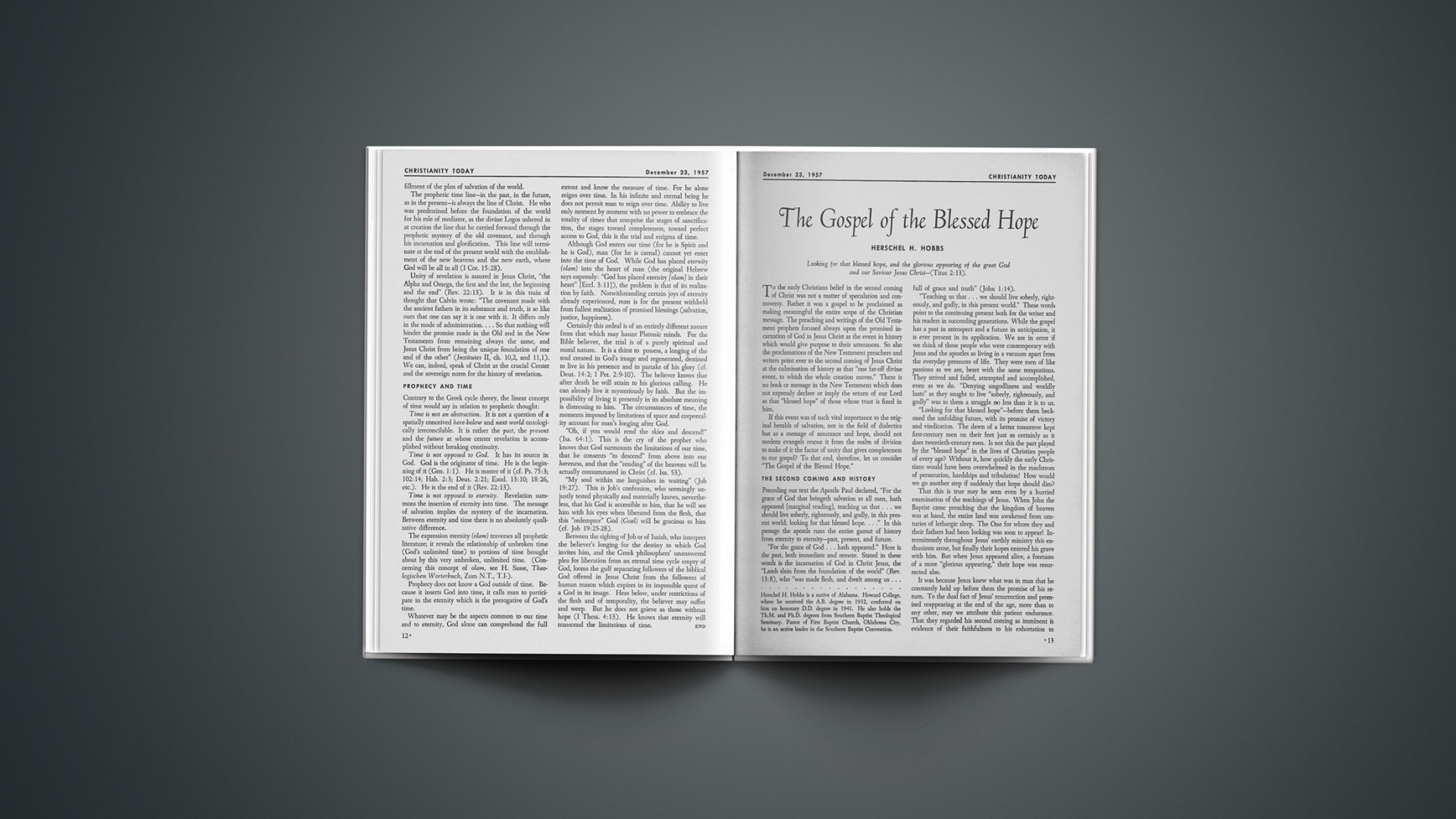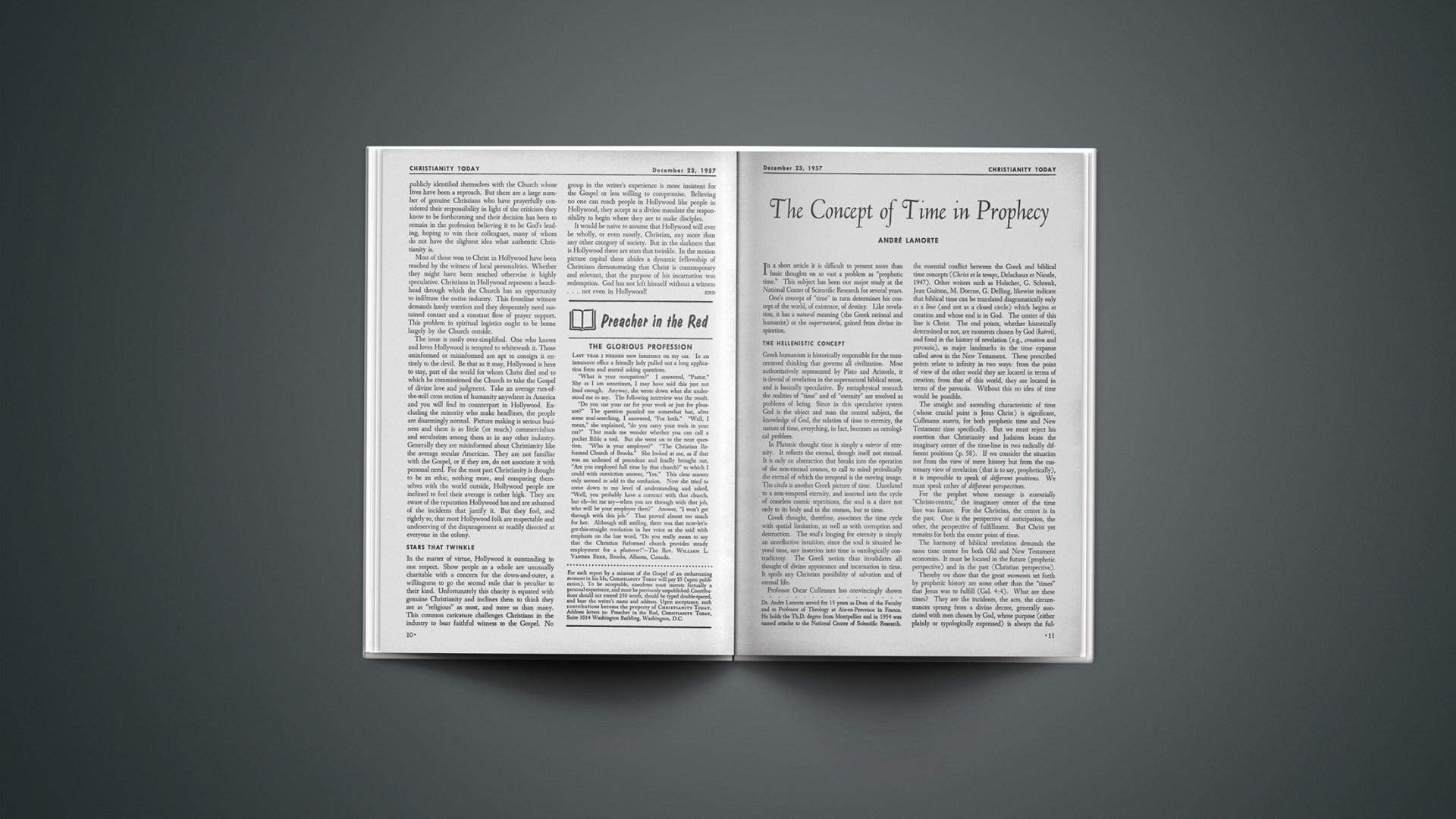As we near the end of the old year we go through the Christmas season toward the New Year with its new tasks and responsibilities. Our thoughts, therefore, quite naturally turn toward a perspective on our life and our work.
We must not lose sight of the connection between Christmas and the New Year. If what is involved in Christmas were simply something romantic, there would be in it no power for a new beginning. But we are reminded that over against the romanticizing of Christmas, we have also the picture of light and darkness, of peace and struggle. We shall have to give thought and attention to these elements of darkness and strife, for the light shines, indeed, in the midst of this darkness. And as we ask ourselves the questions concerning 1957-why has God permitted so many, many things?—then it is good to consider that one can also ask such questions in connection with the Christmas story, as we think of the terrible shadow of the slaughter of the children at Bethlehem.
In all of the history of the church and of theology men’s minds have been occupied again and again with God’s “permitting.” It has been pointed out that the word “permission” is too weak an expression, that God is not simply a witness to world events who simply observes but does not intervene. Calvin calls it foolishness to think of God as “sitting on the observation post, awaiting the fortuitous course of events, so that his judgments depend on the approval of men.” It is exactly the gripping application of all of history, that God rules.
When God permits frightening things, his dealings are at the same time full of activity in the unsearchableness of his ways. His mighty dealings cut directly across the sin-filled horrors of events.
The cross of Christ was not a passive “permission” of God, but a Godly atoning act. When Herod and Pilate and Israel lay violent hands upon Christ, then we read concerning this: “For to do whatsoever thy hand and thy counsel determined before to be done” (Acts 4:28).
The providence of God is least of all satisfactorily described by the term permission. The question is certainly to be understood, as arises so often in the heart, why does God permit so much; why does he not make an end to it, now that there is so much evil on the earth? This is a question that especially in our time once again troubles many hearts and minds. Augustine was concerned with it and we can go back still farther to the Old Testament and the cry of “Why?” resounds out of many troubles and oppressions. But at the same time the Old Testament declares that God has not surrendered the reins out of his hand, but that he “bringeth the counsel of the heathen to nought: he maketh the devices of the people to none effect” (Psalm 33:10).
Especially at Christmas time are we reminded of this. Directly across and through the shadows (Herod!) we see that there is also a boundary to God’s permissiveness. This limit is clearly depicted in the Christmas story. It lies in the preservation of the Christ. Over against the activity of Herod in its deepest darkness, we see the flight to Egypt as the boundary of the evil acts of men. It is not so, also not then, that evil has the upper hand, unlimited as an independent opposition power against God. In the middle of all the unveiling of evil we see, in faith, the dealing of God, which does not always interfere at the moment, as we would sometimes desire to have it, but which establishes boundaries, now here, then there, and which preserves Christ for the world and which will bring forth the coming of his Kingdom.
God asks of us, therefore, a boundless trust. He is not to be counted out in the events of the first Christmas. Looking back we can see the thread of events, but as we stand before them we do not always understands that the protector of Israel neither slumbers nor sleeps (Psalm 121). But there will come a time when, anew and in totality, the sense and purpose of the dealings of God will be made plain.
There is a great struggle going on for the hearts of men. We are sometimes awed by the enormous proportion of the things and events that frighten and amaze us. There are people who do not seem to be able to hold out any longer and who cry in despair, Where is God? They no longer see the boundary of God’s permissive will; they are no longer conscious of God’s overruling might. They begin to believe in the overpowering might of evil.
It is exactly because of this that it is so appropriate that we go alongside the crib of Bethlehem to the end of the year and soon to the new task of the New Year. Round about the manger there are involved the final and deepest decisions, as Mary saw in her thrilling vision: “He hath shewed strength with his arm; he hath scattered the proud in the imagination of their hearts. He hath put down the mighty from their seats, and exalted them of low degree. He hath filled the hungry with good things; and the rich he hath sent empty away” (Luke 1:51–53).
Out of the lowly humiliation of the manger, all things and all human concerns and relationships are placed in an entirely new light. It is a moving scene indeed that Mary here witnesses.
As we pass alongside the manger toward the threshold of the New Year, we shall remember that in the eyes of God things look quite different than we often imagine. He proves all things and judges their worth in the light of his Kingdom. He does this out of the secrecy of the “great mystery.”
We shall then not celebrate Christmas in simply a romantic tradition. The feast does indeed have its impact upon the emotions (and not alone on the understanding), but with a little romanticism over “the light” we shall not get very far in this hard world.
In this real world there is only one perspective: the gospel, the message of salvation, that is also now made known to us. And in all our asking “Why?” there comes to us through the darkness a voice which encourages and spurs us to our work and to our task. For there is always a boundary, a limit, to the permissiveness of God.
To this faith we are called as a faith full of perspective. And this faith is at the same time the assurance that the irrefutable witness has come to us that the proud shall be scattered and that God will comfort the lowly.
It is this humility that is the test for all of life, also in the coming year. Our own lives, too, will be tested by it.
This review is prepared successively for CHRISTIANITY TODAY by four evangelical scholars: Professor W. Stanford Reid of Canada, Professor G. C. Berkouwer of the Netherlands, Professor John H. Gerstner of the United States and Dr. Philip E. Hughes of England.





